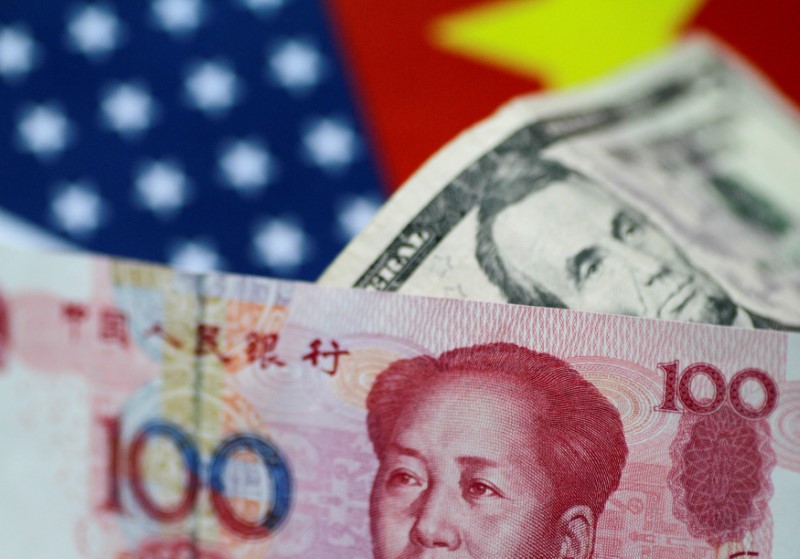One & One Green Technologies stock soars 100% after IPO debut
Updates to reflect RBA decision
Investing.com-- Most Asian currencies firmed slightly, while the dollar steadied on Tuesday after the U.S. and China agreed to extend their trade tariff truce by 90 days, quashing concerns over a potential resumption of their trade war.
The Australian dollar reversed early gains after the Reserve Bank of Australia cut interest rates as expected, and signaled it will ease policy further in line with cooling inflation.
Focus was also squarely on upcoming U.S. consumer price index inflation data for more cues on interest rates in the world’s biggest economy. The print is due later on Tuesday.
Australian dollar dips after RBA cuts rates, flags more easing
The Australian dollar’s AUDUSD reversed early losses to trade in a flat-to-low range after the RBA’s decision.
The RBA cut its benchmark rate by 25 basis points to 3.60%, in line with market expectations. The move was the central bank’s third such rate cut this year, after it began an easing cycle in the first quarter.
The RBA said it expects underlying inflation to trend around the midpoint of its 2% to 3% annual target range, and said that interest rates will ease further in line with cooling inflation.
The central bank had blindsided markets with an unexpected hold in July.
But since then, weak inflation and labor data fueled increased bets that the RBA will ease monetary policy further, with the central bank furthering this notion on Tuesday.
"The Bank endorsed market expectations of further loosening," Capital Economics analysts said in a note, adding that Tuesday’s move strengthened the notion that the RBA will cut rates below 3% by the year-end.
The RBA still flagged heightened uncertainty over demand and supply in the Australian economy
Chinese yuan firms slightly, dollar steady on trade truce
The Chinese yuan’s USDCNY pair fell slightly, while the offshore USDCNH pair fell 0.1%. The dollar index and dollar index futures both moved little after logging some overnight gains.
China on Tuesday announced a 90-day extension to impose additional tariffs on U.S. goods, hours after Trump signed an executive order setting a 90 day extension to a trade truce with Beijing.
The move helped ease market concerns over a revival in a bitter U.S.-China trade conflict, and left trade tariffs between the world’s biggest economies at substantially lower levels.
Tuesday’s move also ramped up hopes for a more permanent trade deal between the world’s biggest economies.
“The formalisation of another 90-day extension to the US-China trade truce represents an expected, but nonetheless welcome development,” ING analysts said.
US CPI inflation data on tap
Markets were also anticipating key U.S. CPI inflation data, which is due later in the day.
The print is widely expected to factor into expectations for an interest rate cut in September, after soft labor data for July sparked heightened bets on more Federal Reserve easing.
But an uptick in inflation could hurt expectations for a September rate cut, with markets also watching for a tariff-driven increase in prices.
Broader Asian currencies took some support from the U.S.-China trade extension. The South Korean won’s USDKRW pair fell 0.2%, while the Singapore dollar’s USDSGD pair shed 0.1%.
The SGD was supported by Singapore hiking its annual gross domestic product outlook for the year, to a range of 1.5% to 2.5% from 0% to 2.0%.
The Japanese yen’s USDJPY pair rose slightly, while the Indian rupee’s USDINR pair rose 0.1% and remained close to record highs hit last week.
The rupee was battered by Trump outlining as much as 50% tariffs on India over its buying of Russian oil, which New Delhi has shown no signs of stopping.
